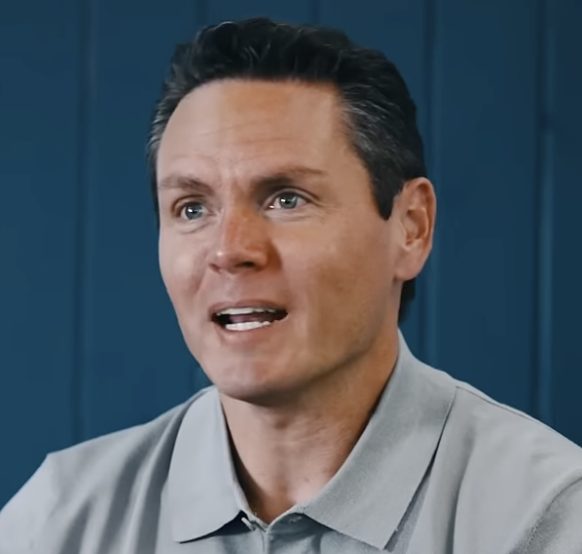Many spiritual seekers spend years trying to “kill” their ego, believing this is the path to enlightenment. I’ve watched countless people struggle with this concept, fighting an internal battle they can never win. The truth is startlingly simple yet profound: ego death isn’t about destroying something real – it’s about recognizing something that never existed in the first place.
When we attempt to defeat our ego, we paradoxically strengthen it. This is the fundamental contradiction that keeps many spiritual practitioners stuck in an endless loop of frustration. By trying to eliminate your ego, you’re actually reinforcing its existence. You’re saying, “I have this thing called an ego that I need to get rid of” – which immediately makes it real in your perception.
Seeing Through the Mirage
The ego doesn’t need to be conquered – it needs to be seen through. This distinction completely transforms how we approach our spiritual practice. Instead of waging war against ourselves, we simply need to develop clarity of perception.
Think of it like this: You can’t transcend an illusion by believing in it. If you see a mirage of water in the desert, you don’t need techniques to make the water disappear. You just need to recognize it was never water in the first place. The same applies to ego.
In my work with clients, I’ve noticed three common misconceptions about ego dissolution:
- That ego death requires force or effort
- That the ego is a tangible entity that can be removed
- That spiritual growth means battling against parts of yourself
These misunderstandings create unnecessary suffering. The path forward isn’t about adding more struggle but removing the belief in separation itself.
The Paradox of Non-Effort
The most powerful insight I’ve discovered is that the moment you stop trying to fix, fight, or eliminate your ego, it begins to dissolve on its own. This is the great paradox of spiritual awakening. The very effort to transcend the ego becomes the obstacle to seeing its illusory nature.
When we cease our internal warfare, something remarkable happens. The mind becomes still enough to see clearly. Without our constant reinforcement through identification and resistance, the ego has no foundation to stand on.
The moment you stop trying to fix it, fight it or get rid of it, it dissolves on its own.
This approach requires trust rather than effort. It asks us to relax our grip on the very identity we’ve spent our lives constructing and defending. For many, this feels like stepping into an abyss – which is why we resist it so strongly.
Beyond the Illusion
Once the illusion of ego is exposed, we discover there was never an ego to begin with. What remains is not emptiness or loss, but a profound sense of wholeness that was always present beneath our fragmented self-concept.
This realization doesn’t come through intellectual understanding alone. It emerges through direct experience – moments when our habitual self-referencing temporarily falls away, revealing the spacious awareness that was always here.
The journey toward this understanding typically unfolds in stages:
- Recognizing how we create and maintain the sense of separate self
- Allowing our identification with thoughts and emotions to relax
- Experiencing moments of ego transparency where boundaries dissolve
- Stabilizing in the recognition of our true nature beyond ego
Each stage brings its own challenges and insights, but the core principle remains: we cannot transcend what we continue to believe in.
I’ve found that this approach to spiritual growth is not only more effective but also more compassionate. Rather than creating internal division and struggle, we learn to meet ourselves with understanding and clarity.
The next time you feel caught in ego-based reactions or thoughts, try this: instead of fighting against them, simply notice them without judgment. Watch how they arise and pass away on their own when not fueled by your resistance. This simple practice of non-interference allows the natural dissolution process to unfold.
True freedom comes not from defeating the ego but from seeing that it was only ever a collection of thoughts, memories, and sensations mistaken for a solid self. When this is clearly recognized, not just intellectually but in lived experience, what we call “ego death” has already occurred – not through destruction, but through clear seeing.
Frequently Asked Questions
Q: Is ego death a painful or frightening experience?
It doesn’t have to be. When approached through force or resistance, it can feel threatening to our sense of self. However, when it happens through clear seeing and allowing, it’s often experienced as a profound relief – like putting down a heavy burden you didn’t know you were carrying.
Q: How can I tell if I’m making progress in seeing through the ego?
You’ll notice less reactivity to situations that previously triggered strong emotional responses. There’s a growing sense of spaciousness around thoughts and feelings, and you’ll find yourself less identified with your personal story. The need to defend or promote your self-image diminishes.
Q: Can meditation help with recognizing the illusory nature of ego?
Yes, meditation practices that cultivate present-moment awareness can help us observe how the sense of self is constructed moment by moment. However, it’s important that meditation doesn’t become another way of “trying to get rid of ego” – instead, it should foster clear seeing.
Q: Does seeing through the ego mean I’ll lose my personality or individuality?
Not at all. Your unique expressions, preferences, and ways of being continue. What falls away is the compulsive identification with these as a solid, separate self. Your personality becomes more of a fluid, natural expression rather than a rigid identity that needs constant protection.
Q: How does this understanding affect daily life and relationships?
As the illusion of a separate self becomes transparent, relationships tend to become more authentic and less driven by ego needs like approval or control. There’s greater capacity for genuine connection, as the barriers of self-protection diminish. Daily activities continue, but with less friction and resistance to what is.







